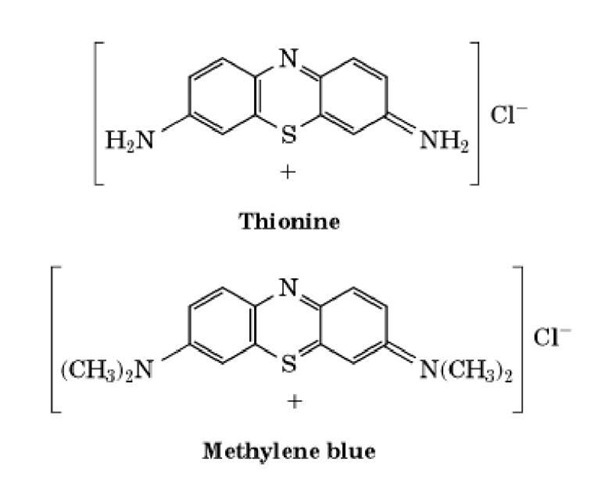Giemsa is one of the most useful dyes for staining chromosomes in the banding patterns characteristic of different types of heterochromatin and euchromatin (see C-Banding and G Banding). It is a mixture of organic dyes including thionine, or Lauth’s violet, and methylated derivatives of thionine (see Figure 1) including azure B, azure A, azure C, and methylene blue. Thionine itself stains chromosomes uniformly. The introduction of methyl groups, however, changes the properties of the molecule so that it differentially stains chromatin. The thiazine ring in the Giemsa dyes interacts with the phosphodiester backbone of DNA and side-stacks along the double helix. How this might occur in a chromatin context is not yet known. Variations in chromosomal preparations, in which the histones are removed and other chromosomal proteins digested to different extents, enhance the banding patterns obtained with Giemsa dye (see G Banding).
Figure 1. The chemical structures of thionine and methylene blue.

